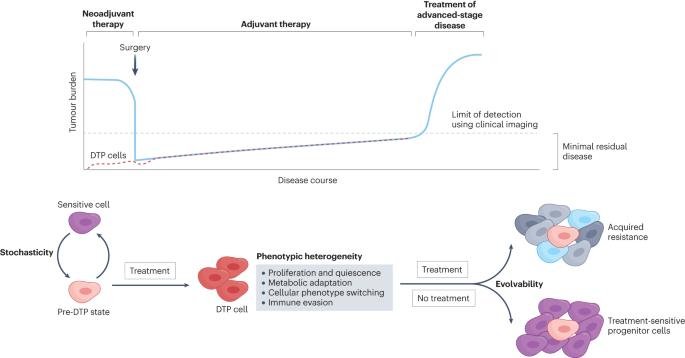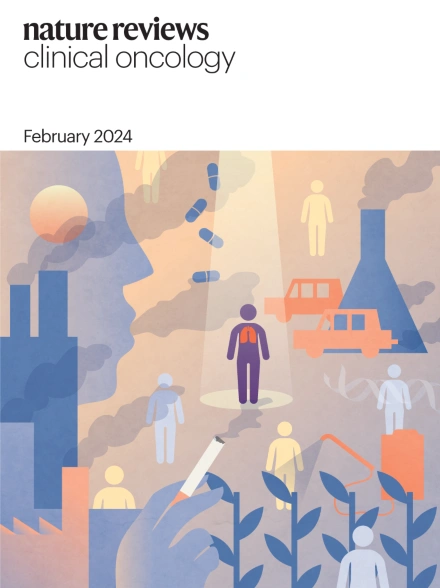Drug-tolerant persister cells in cancer: the cutting edges and future directions
IF 82.2
1区 医学
Q1 ONCOLOGY
引用次数: 0
Abstract
Drug-tolerant persister (DTP) cell populations were originally discovered in antibiotic-resistant bacterial biofilms. Similar populations with comparable features have since been identified among cancer cells and have been linked with treatment resistance that lacks an underlying genomic alteration. Research over the past decade has improved our understanding of the biological roles of DTP cells in cancer, although clinical knowledge of the role of these cells in treatment resistance remains limited. Nonetheless, targeting this population is anticipated to provide new treatment opportunities. In this Perspective, we aim to provide a clear definition of the DTP phenotype, discuss the underlying characteristics of these cells, their biomarkers and vulnerabilities, and encourage further research on DTP cells that might improve our understanding and enable the development of more effective anticancer therapies. Despite improved effectiveness, most systemic cancer therapies are not curative and most patients will develop acquired resistance that often cannot be explained by the emergence of specific genomic alterations. In this Perspective, the authors describe the potential role of a small population of tumour cells, termed drug-tolerant persister cells, that are able to survive therapy and, on continued treatment exposure, develop stable mechanisms of resistance to systemic therapies.


癌症中的耐药持久细胞:前沿和未来方向。
耐药持久性细胞群最初是在抗生素耐药性细菌的生物膜中发现的。自那以后,在癌症细胞中发现了具有类似特征的类似群体,并与缺乏潜在基因组改变的治疗耐药性有关。过去十年的研究提高了我们对DTP细胞在癌症中的生物学作用的理解,尽管对这些细胞在治疗耐药性中的作用的临床知识仍然有限。尽管如此,预计针对这一人群将提供新的治疗机会。从这个角度来看,我们的目标是为DTP表型提供一个明确的定义,讨论这些细胞的潜在特征、它们的生物标志物和脆弱性,并鼓励对DTP细胞的进一步研究,这可能会提高我们的理解,并有助于开发更有效的抗癌疗法。
本文章由计算机程序翻译,如有差异,请以英文原文为准。
求助全文
约1分钟内获得全文
求助全文
来源期刊
CiteScore
99.40
自引率
0.40%
发文量
114
审稿时长
6-12 weeks
期刊介绍:
Nature Reviews publishes clinical content authored by internationally renowned clinical academics and researchers, catering to readers in the medical sciences at postgraduate levels and beyond. Although targeted at practicing doctors, researchers, and academics within specific specialties, the aim is to ensure accessibility for readers across various medical disciplines. The journal features in-depth Reviews offering authoritative and current information, contextualizing topics within the history and development of a field. Perspectives, News & Views articles, and the Research Highlights section provide topical discussions, opinions, and filtered primary research from diverse medical journals.

 求助内容:
求助内容: 应助结果提醒方式:
应助结果提醒方式:


